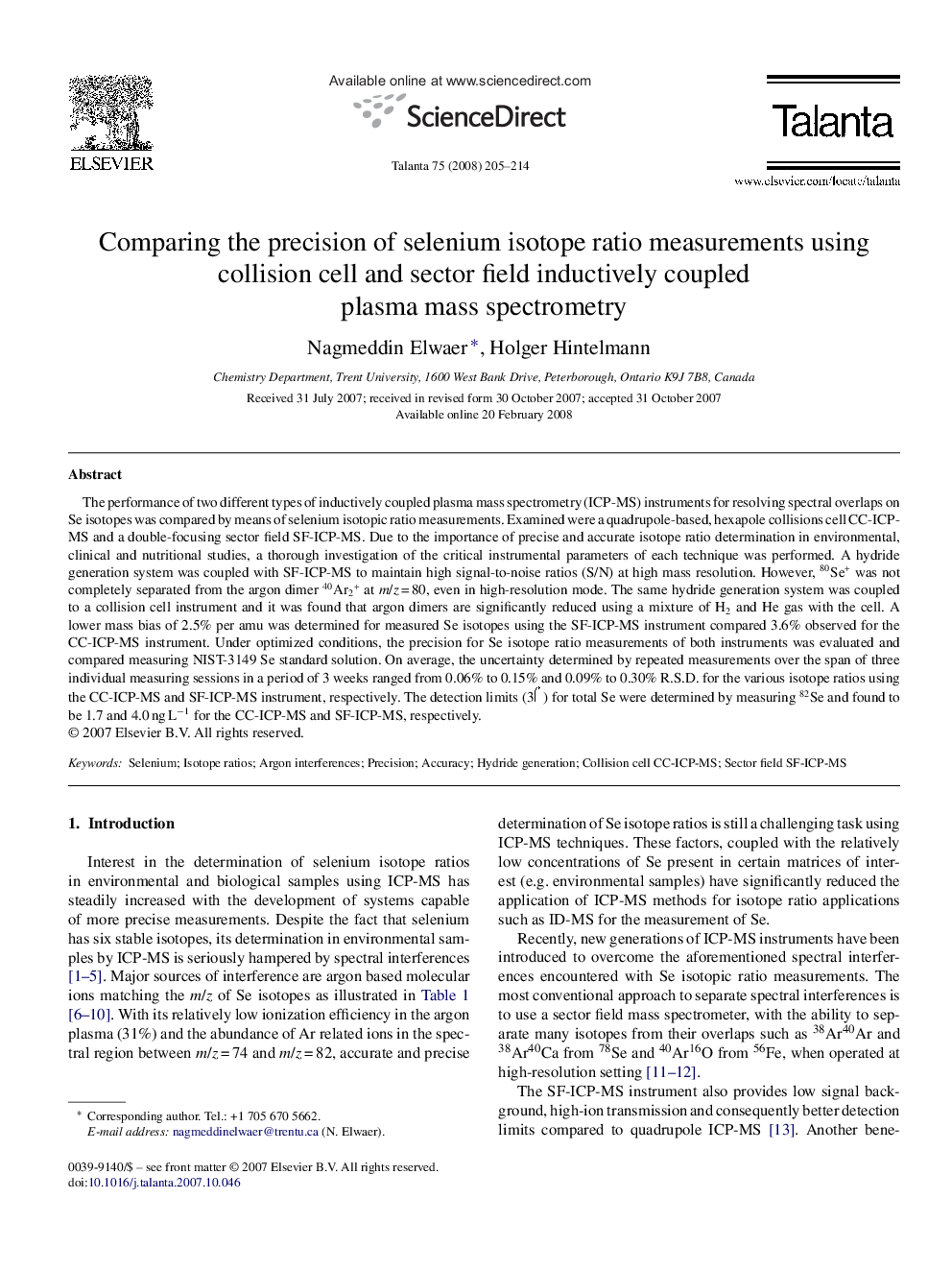| Article ID | Journal | Published Year | Pages | File Type |
|---|---|---|---|---|
| 1245541 | Talanta | 2008 | 10 Pages |
The performance of two different types of inductively coupled plasma mass spectrometry (ICP-MS) instruments for resolving spectral overlaps on Se isotopes was compared by means of selenium isotopic ratio measurements. Examined were a quadrupole-based, hexapole collisions cell CC-ICP-MS and a double-focusing sector field SF-ICP-MS. Due to the importance of precise and accurate isotope ratio determination in environmental, clinical and nutritional studies, a thorough investigation of the critical instrumental parameters of each technique was performed. A hydride generation system was coupled with SF-ICP-MS to maintain high signal-to-noise ratios (S/N) at high mass resolution. However, 80Se+ was not completely separated from the argon dimer 40Ar2+ at m/z = 80, even in high-resolution mode. The same hydride generation system was coupled to a collision cell instrument and it was found that argon dimers are significantly reduced using a mixture of H2 and He gas with the cell. A lower mass bias of 2.5% per amu was determined for measured Se isotopes using the SF-ICP-MS instrument compared 3.6% observed for the CC-ICP-MS instrument. Under optimized conditions, the precision for Se isotope ratio measurements of both instruments was evaluated and compared measuring NIST-3149 Se standard solution. On average, the uncertainty determined by repeated measurements over the span of three individual measuring sessions in a period of 3 weeks ranged from 0.06% to 0.15% and 0.09% to 0.30% R.S.D. for the various isotope ratios using the CC-ICP-MS and SF-ICP-MS instrument, respectively. The detection limits (3) for total Se were determined by measuring 82Se and found to be 1.7 and 4.0 ng L−1 for the CC-ICP-MS and SF-ICP-MS, respectively.
